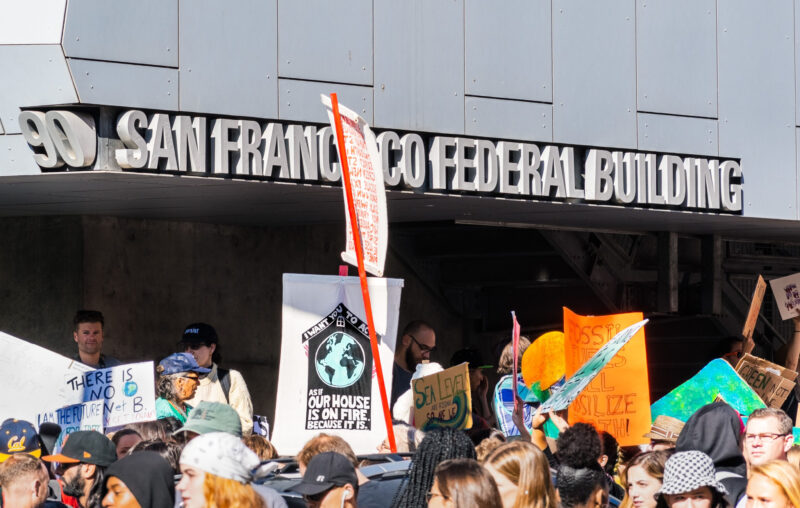Before Moving From DC, Move Federal Employees from San Francisco

Both former President Trump and Florida Governor DeSantis have proposed moving federal employees out of the DC area, and their message resonates with voters seeking a government more responsive to the concerns of a broader spectrum of Americans. More fundamentally, it raises a core question of proper governance: are the right employees in the right places? Answering this question starts by looking not in DC but everywhere else, because more than 80 percent of federal staff already work outside the Washington area.
The even-more-critical question is whether employees are doing the right things; simply moving them around is no guarantee of better performance. The right location, however, can enable government effectiveness by recruiting a quality workforce, exposing them to relevant information, offering diverse perspectives, and forging connections with key stakeholders. Relocation can bring substantial benefits, but only if done systematically, with a plan in mind. A solution built on the solid foundation of our Constitution’s federal structure suggests that federal employees currently outside the District be relocated to nearby state government partners in state capitals wherever feasible. Subsequently or simultaneously, positions in the national capital with geographically based portfolios can also gradually transfer to federal facilities in the relevant state capitals.
Some federal employees such as park rangers have jobs tied to specific places. Yet many others have a tenuous functional connection to where they work, and the contingency of many federal workplaces is illustrated in the recent dramatic growth of remote work in the federal government. The Department of Health and Human Services (HHS), for which I oversaw an organizational review in the last administration, operates an outdated ten-region structure not revisited in a half-century. Its location in downtown San Francisco (“Region IX”), for instance, is high-cost office space – and in such a dangerous neighborhood HHS recently told employees to avoid using it. Even if the offices were safe to use, Bay Area housing prices are so high many federal employees are forced into almost impossible commutes. This is bad for staff and costly for the public — with tax dollars wasted for unusable space and location-based salaries even higher than those in the District. And if the objective is to put federal investment in more politically diverse and less-wealthy places, relocating from San Francisco and similarly “deep blue” metros makes even more policy sense than simply moving out of DC.
The ten-region model originated in a plan by President Nixon to push decisionmaking out of Washington for some of the same reasons Republicans offer today. With various agencies located together, it was hoped they would coordinate at least with each other. Many agencies, however, never complied with Nixon’s plan, and others soon began deviating from it — today they have a plethora of regional and field structures. As revealed in 2001 Congressional hearings, this persistent fragmentation, combined with the lack of authoritative coordination by the Office of Management and Budget (OMB), frustrated the original plan (itself not fully thought out) and led to the current organizational jumble.
Outside our nation’s capital, and absent obvious place-based needs, federal work locations should be based on the nation’s fundamental constituent elements, the states and their capitals. These, not an infinite variety of “regions,” nor localities adventitiously selected by different agencies, are the natural — constitutionally based — subnational units of federal activity. Concentrating employees in capitals supports coordination among agencies, and additionally facilitates crucial intergovernmental cooperation with state agencies.
Capitals are convenient for businesses whose concerns often cross state-federal boundaries, and locating there enhances the delivery of federal services, which is often done in conjunction with state entities. Our contemporary model of government is sometimes characterized as “cooperative federalism,” and cooperation is enabled by colocation and the personal and professional connections it fosters. Talented individuals seeking federal employment can remain in their home states, and the large population of capable state employees creates a strong career ladder for administrative talent. Moreover, many state capitals, like Sacramento, Springfield, or Albany, even if themselves tending left-of-center, are within commuting range of more politically diverse suburbs and rural areas, offering the potential for a more representative employee pool, lower cost of living, economic development, and reduced salary costs for the taxpayer.
An objection might be that fifty locations are yet more fragmented and difficult to oversee, producing isolated employees. Each federal program, however, need not have representatives in every state. A program officer could be based in Boise and cover several nearby states; mission-support functions like HHS’s General Counsel Offices, currently divided into ten regional groups of attorneys, might well consolidate in locations in four time zones to serve multiple states as cohesive legal teams. According to agency needs, who works at which capital could be flexible. Moreover, because capital city consolidation would incorporate many small federal “field” offices as well as regional headquarters, the total number of locations at the end of this reconfiguration will likely be smaller.
To enforce coordination within the federal executive and between federal agencies and state governments — correcting a fatal flaw in Nixon’s original plan — the President should appoint a representative to each state capital, domestic policy officials analogous to our international ambassadors. Equipped with a small staff and a career deputy, this appointee (likely part of OMB) would chair a federal interagency council in the state and act as an ombudsman to troubleshoot issues for state agencies and businesses. Because OMB state coordinators would replace regional directors of several Departments, many politically appointed, the relative political and career balance would remain unchanged while enhancing accountability, responsiveness, and presidential authority. Once established or expanded, state capital offices would provide the appropriate groundwork — the policy rationale, the oversight, the destination, and the physical worksites — for any subsequent reassignment of those staff from Washington, DC overseeing and implementing domestic programs in those states. This kind of federal relocation plan could work: improving service to the public while making substantial progress toward an on-the-ground operational restoration of American federalism.








